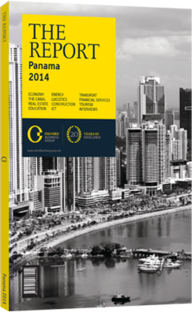OBG talks to Gabriel de Obarrio, CEO, Generali Panama Branch

Interview: Gabriel de Obarrio
Has the 2012 insurance legislation created conditions for international mergers and acquisitions?
GABRIEL DE OBARRIO: It was the right step for the financial sector to move to the next level as our legal framework was completely out-of-date. There are now 32 insurance firms and the need for stronger supervision was pressing. This new legislation has given the authorities all the necessary tools for better supervision of insurers’ operations, allowing the sector to gain transparency and competitiveness so international firms can expect a level playing field for their activities in the market. If we go back 25 years, there were 32 insurance companies in Panama, but for a much smaller market, so a lot of mergers and acquisitions started to take place, reducing the number to 17.
With the economic boom that we have been experiencing over the past few years, new international players have started to enter the market. For example, 15 years ago, 75% of companies were domestic, while today 80% of the market is represented by firms from Europe, the US, Colombia, Venezuela and elsewhere. The market is likely to consolidate again in coming years, potentially reducing the total number of players by as much as half. However, the local market will gain competitiveness and sophistication, with multinational firms bringing technology and know-how.
How much growth will the expansion of the Panama Canal and infrastructure developments bring?
DE OBARRIO: The insurance industry is linked to the evolution of the economy. Over the past 15 years, Panama has posted an average growth of 6-7 % with a lot of new construction and infrastructure that needed to also be insured. Thus, the insurance industry has risen in line with Panama’s GDP growth. Besides, every year the Panamanian economy receives more than $2.5bn in foreign investments, which need to be insured.
With the new bridge, the new metro lines and copper mine projects, there is a lot of potential for more growth. Once the canal expansion is complete, revenue is going to be much higher and the insurance sector will be a big part of building on this momentum.
What potential is there for micro insurance?
DE OBARRIO: Panama enjoys a higher than average insurance consumption per capita in Latin America though it is still low compared to the US or Europe. With 3.5m people, Panama has the second-highest insurance premiums per capita in Latin America, second only to Chile. One of the main challenges for insurers remains to convince Panamanians to buy insurance, which is still considered expensive based on their local income.
Micro insurance can represent an alternative for reaching out to lower-income bracket. In Panama, it will have a slow take-off even though the new legislation opened the doors for insurers to develop micro insurance programmes and alternative channels.
The market is still controlled by brokers and agencies, but with the new legislation, insurers can develop alternative marketing with channels like pharmacies, social media, internet and supermarkets. The potential for growth is big and we can expect penetration rates to rise substantially. The challenge remains to raise insurance consumption per capita to the levels seen in more developed countries.
What hurdles hinder Panama from becoming a competitive reinsurance centre?
DE OBARRIO: Panama has been a financial centre since the beginning of the last century, when insurance services began to develop to cater to Panama Canal operations. Today, we face fierce competition from Miami.
As the biggest economy in the world, the US enjoys economies of scale that make financial operations more competitive. However, Panama has put in place several laws, like Law 41, that encourages multinational firms to outsource services such as call centres or establish their regional headquarters. We have many assets: no hurricanes, no terrorism and Latin flavour.
The biggest challenge is the lack of human capital.
You have reached the limit of premium articles you can view for free.
Choose from the options below to purchase print or digital editions of our Reports. You can also purchase a website subscription giving you unlimited access to all of our Reports online for 12 months.
If you have already purchased this Report or have a website subscription, please login to continue.

